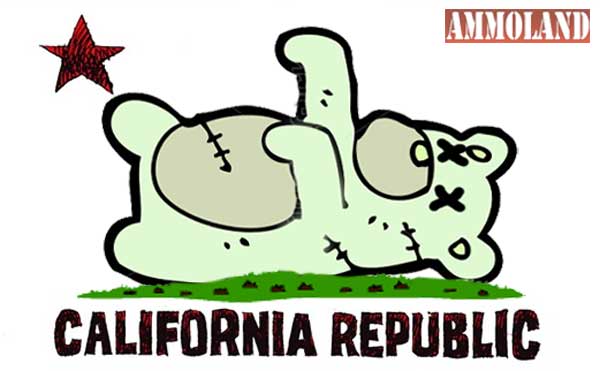

New York, NY -(Ammoland.com)- A law that just took effect in California raises the ante in the antigun movement’s continued assault on the right of the people to keep and bear arms.
A British newspaper, the guardian, said, in a December 31, 2015 article titled, “Landmark California gun seizure law takes effect 1 January but amid concerns,” https://www.theguardian.com/us-news/2015/dec/31/landmark-california-gun-seizure-law-takes-effect, that the “gun statute going into effect on 1 January gives the police or family members the option to petition the courts to seize the guns and ammunition of someone they think poses a threat, the first law of its kind in the country.”
A California, antigun proponent and assemblywoman, Nancy Skinner, sponsored the antigun legislation. But, how does this new restrictive California antigun bill, that just became law, actually operate?
Not trusting the guardian – a liberal newspaper with a profound antigun bias, based in the antigun United Kingdom – to adequately provide the American public with the details, the Arbalest Quarrel decided to take a look at what this law really says and the manner in which it actually operates.
The bill, CA A.B. 1014, that took effect on January 1, 2016, both amends existing California State Statutes and creates a substantial number of new California Penal Code Sections. Let’s take a close look at just a few of the pertinent changes that CA A.B. 1014 makes to California law.
Cal Pen Code § 1524 sets forth the general grounds under which a search warrant, primarily pertaining to investigations of felonies in California, can be lawfully issued. A new paragraph in Cal Pen Code § 1524, establishes an unusual condition under which a court can issue a warrant. The new paragraph, which has nothing to do with investigations of felonies, says that, “A search warrant may be issued upon any of the following grounds. . . (14)Beginning January 1, 2016, the property or things to be seized are firearms or ammunition or both that are owned by, in the possession of, or in the custody or control of a person who is the subject of a gun violence restraining order that has been issued pursuant to Division 3.2 (commencing with Section 18100) of Title 2 of Part 6, if a prohibited firearm or ammunition or both is possessed, owned, in the custody of, or controlled by a person against whom a gun violence restraining order has been issued, the person has been lawfully served with that order, and the person has failed to relinquish the firearm as required by law.
To understand the import of the changes that CA A.B. 1014 brings to California’s Statutes, we must zero in on the phrase, “gun violence restraining order.” This is something entirely new to California gun laws and to the laws governing the operation of injunctions in California. And, it is something that, at present, exists in no other State.
Prior to enactment of CA A.B. 1014, a California peace officer, when responding to a domestic disturbance, was required to take temporary custody of a firearm at the scene of the domestic disturbance but only if the firearm is in plain sight. The officer was not authorized to hunt around for a firearm. The emphasis, then, in California law, prior to enactment of CA A.B. 1014, was on the domestic disturbance, not on one’s firearms, where one has a personal property interest in those firearms.
What CA A.B. 1014 does is to create, presumptively, a nexus, that is to say, a connection, between domestic disturbance or violence and firearms. CA A.B. 1014 is, then, aimed directly at gun confiscation. It operates through the mechanism of a ‘temporary restraining order.’
Attorneys use a shorthand phrase for a ‘temporary restraining order.’ They refer to it as a “TRO,” (where each letter is pronounced, separately). What is a TRO? A TRO is an extraordinary writ. It is an extreme form of legal injunction. And it is one that courts traditionally are loathe to issue. Why is that?
Our system of laws is grounded on the idea that a person has a right to his or her day in court. Court proceedings, whether in criminal matters or civil matters, almost invariably commence with a formal written complaint. No action is taken against the named defendant in a complaint until that defendant has had an opportunity to respond. This means that two parties are involved in the legal process: a plaintiff and a defendant. And a court of competent jurisdiction hears what both parties have to say before entering judgment for one or the other party. But, a person requesting a court to issue a TRO is essentially declaring: “I can’t wait for a hearing. The risk of harm is imminent unless the court takes immediate action on my behalf.” The petitioner is asking a court to render a decision, ex parte. That means the court is asked to render a decision on the basis of one party’s allegations alone – something a court of law is, understandably, in our adversarial system of law and justice, wary of doing.
Cal Pen Code § 18150 is the specific mechanism for issuance of this singularly bizarre TRO: a gun violence restraining order.
Cal Pen Code § 18150 sets forth, inter alia:
“An immediate family member of a person or a law enforcement officer may file a petition requesting that the court issue an ex parte gun violence restraining order enjoining the subject of the petition from having in his or her custody or control, owning, purchasing, possessing, or receiving a firearm or ammunition.”
“A court may issue an ex parte gun violence restraining order if the petition, supported by an affidavit made in writing and signed by the petitioner under oath, or an oral statement taken pursuant to subdivision (a) of Section 18155, and any additional information provided to the court shows that there is a substantial likelihood that both of the following are true:
The subject of the petition poses a significant danger, in the near future, of causing personal injury to himself, herself, or another by having in his or her custody or control, owning, purchasing, possessing, or receiving a firearm as determined by considering the factors listed in Section 18155.”
“An ex parte gun violence restraining order is necessary to prevent personal injury to the subject of the petition or another because less restrictive alternatives either have been tried and found to be ineffective, or are inadequate or inappropriate for the circumstances of the subject of the petition.”

How long does the gun violence restraining order remain in effect? Cal Pen Code § 18155(c) says, “If the court determines that the grounds to issue an ex parte gun violence restraining order exist, it shall issue an ex parte gun violence restraining order that prohibits the subject of the petition from having in his or her custody or control, owning, purchasing, possessing, or receiving, or attempting to purchase or receive, a firearm or ammunition, and expires no later than 21 days from the date of the order.”
Now, California Assemblywoman Nancy Skinner, might, if pressed, argue that her bill, CA A.B. 1014, is not aimed at suppression of gun rights but only aimed at protecting a person from harming himself or others with guns. But one might sensibly respond to Nancy Skinner by mentioning that California already has a full panoply of injunction laws that one may draw upon in a pinch, and, so, the State certainly doesn’t need another one. In fact, under Cal Code Civ Proc § 527.6, “Temporary restraining order and order after hearing prohibiting harassment,” California has in place a mechanism for granting exceptional relief, that is to say, a TRO.
Why, then, did the California State Legislature deem it necessary to establish a whole new TRO law scheme, giving it a unique descriptor, “gun violence restraining order,” if not to further erode gun ownership and gun possession in California?
And, if that is the true purpose behind CA A.B. 1014, then why not add a “knife violence restraining order,” and a “baseball bat violence restraining order?” But, then, they are all equally absurd because each is aimed at addressing an inanimate, non-conscious object, and none of them are aimed at the cause of perceived violence, namely, the person. Injunctions, including TROs, are, after all, historically, and sensibly, directed toward individuals – sentient beings – not objects.
The very placement of the “gun violence restraining order,” in the Penal Code, in lieu of the Civil Code, where TROs traditionally fall – since TROs pertain to civil remedies – is demonstrative of a clever new way in which California antigun legislators seek to regulate firearm ownership and possession. The “gun violence restraining order” is a legal artifice through which one’s firearms can be confiscated, immediately, without hearing, and, indeed, without formal legal notice, simply upon the affidavit of a police officer or immediate family member – and eventually, perhaps, even upon affidavit of a neighbor – any one of whom may have an ulterior motive for taking action against this or that person, which has nothing to do with the matter of imminent harm.
CA A.B. 1014 is, ultimately, less about protecting people through TROs and more about suppressing the inalienable right of Americans to own and possess firearms – treating the very ownership and possession of firearms as inevitably criminal, and, therefore, a proper subject – in the eyes of antigun zealots – of the most draconian antigun measures that can be devised, however irrational those measures may happen to be.
The antigun forces in the California Legislature will, no doubt, in time, create ever more novel antigun laws, restricting ever more kinds of guns that a Californian may own, and scrutinizing ever more closely the lives of those Americans who reside in California, who wish to exercise their Second Amendment right to keep and bear arms. Antigun States such as New York and New Jersey will likely follow suit – each State borrowing from the other, the same draconian laws.
One thing is certain. The right of the American people to keep and bear arms will grow ever more tenuous and ephemeral if the antigun forces continue to have their say and their way.
About The Arbalest Quarrel:
Arbalest Group created `The Arbalest Quarrel’ website for a special purpose. That purpose is to educate the American public about recent Federal and State firearms control legislation. No other website, to our knowledge, provides as deep an analysis or as thorough an analysis. Arbalest Group offers this information free.
For more information, visit: www.arbalestquarrel.com.

So if you have a verbal fight with one of your neighbors they can call and have all you’re guns confiscated !!!
That’s bull sh*t !!!!!!!!!
Just another reason to retire in Arizona.
Scott, good point on the LEO.
California, a great place for someone besides me or the readers here to live.
Could this or would would this be put into effect against an LEO? If only the name were used by the complaining party how would the issuing authority know the “defendant (so to speak), was an LEO? More importantly, what if the LEO was in fact a direct threat to someone due to persona reasons? How would or could the TRO effect his job as a LEO?…just a few thoughts.
Nancy Skinner looks like she walked directly from Haight-Ashbury into California politics. She left hippiedom for yuppiedom and now she’s an ouppie, regulating things about which she remains totally ignorant and totally leftist. California conservatives will see much more of this haughty oppression from the moon band and if they value their freedoms, they’ll join the tsumani to friendlier states.